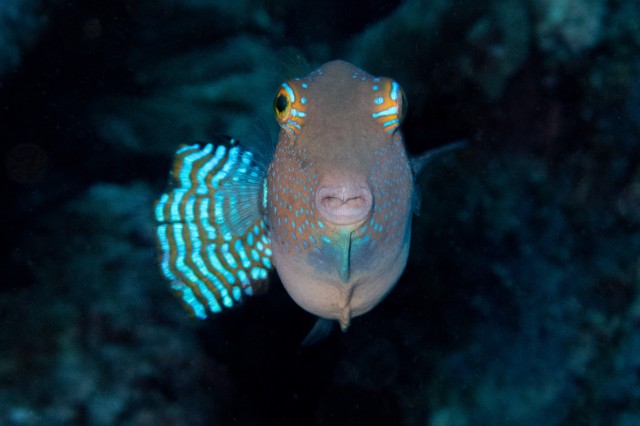Halichoeres sanchezi: A New Fish Species from Mexico’s Revillagigedos Islands
How a team of marine scientists netted a fish species new to science with three dives off a far-flung island
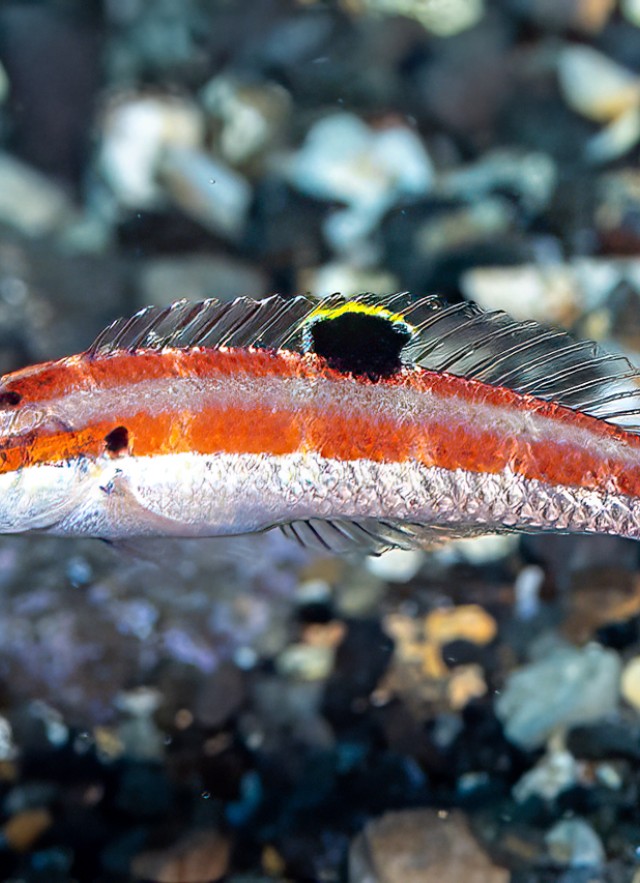
Photo by Allison & Carlos Estape
Published March 6, 2024
NHM’s Ichthyology Curator Dr. Bill Ludt wasn’t expecting to find a new species of fish in Mexico’s far-flung tropical Revillagigedos Islands.
There had already been several historical collecting expeditions to these islands, and he was hoping to primarily get more modern specimens to complement older, existing specimens in the collection. After nearly two weeks of diving the trip was coming to a close. There were three dives scheduled for the last day; the first descent netted a fish unknown to science.
“This was the last day of an already successful trip,” said Ludt. “We had three dives planned, and the very first started out as a scenic dive.” 335 miles south of Baja California, the Revillagigedos Islands are a UNESCO World Heritage Site and a marine preserve and national park of Mexico, famed for their unique ecosystems made possible by their isolation and protection from industrial and traditional fishing. These volcanic islands are magnets for ocean life, notably big charismatic fish like sharks and manta rays. The 70-foot dive near San Benedicto Island was supposed to be about getting some great photos of the tiger sharks, manta rays, and other majestic marine life that call the islands home.
The expedition was made up of researchers, like Ludt, and community scientists looking to document the rich diversity of the marine protected area digitally for a vast online compendium of fishes—A guide to the Shorefishes of the Tropical Eastern Pacific—a bilingual photographic encyclopedia of fishes founded by the Smithsonian.
Physical fish specimens for museums like NHM are absolutely crucial to understanding and describing life on our planet. Through genetic analysis and by collecting across time and space, existing collections become even more valuable for describing life on our planet, and how it changes over time. Unfortunately fish lose their color when preserved, which is why photographs of fish in the wild can be incredibly valuable to understanding life underwater and complement physical specimens. On this dive, fellow marine scientist Dr. Carlos Armando Sánchez Ortíz thought he was collecting a small red and white serrano (a smaller fish related to groupers) to help document its color—except when he surfaced it was something new to science.
“Everyone could see that it wasn't a Socorro serrano,” said Ludt. “It was a wrasse, that was very clear, but the color pattern didn’t match any known species.”
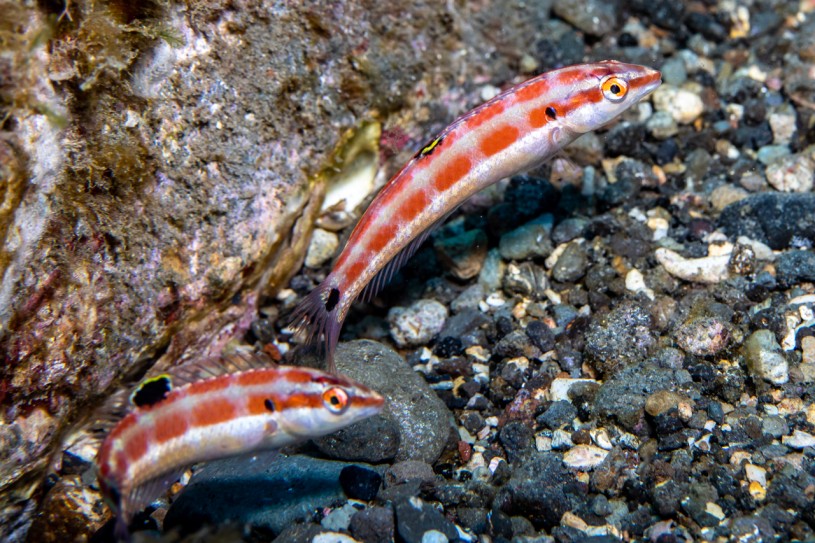
The small fish was white with reddish horizontal stripes along their top half and black patches on their dorsal fin, behind their gills, and just ahead of their tail fin. Named in honor of Sánchez Ortíz, Halichoeres sanchezi or tailspot wrasse is likely found nowhere else on the planet, making it an endemic species to the archipelago. The discovery brings the total number of endemic fish from Revillagigedos to 14, highlighting the value of the marine protected area to marine science.
Dive 2
After the team of divers knew there was an undescribed species in the area, the chase was on to photograph the unknown species in its natural habitat and to collect additional specimens so that the species could be described. Females and juveniles were in abundance among the volcanic rocks, but Sanchez hadn’t encountered a male which was a problem. With fish in the wrasse family, males are key to describing a species.
“To describe a new species, you really want to describe all variation within that species,” said Ludt. “Wrasses are sequential hermaphrodites and actually have two different color patterns for adults—they have an initial female phase and later they can actually become males—what we call a terminal phase male—and those are always a different color pattern. And so we needed that terminal phase male, because for most wrasse descriptions terminal phase males are chosen for the holotype.”
Holotypes are the specimens used to describe an organism, setting the standard for our understanding of that species. Without a male specimen, a full description of the new species would not be complete. The team had two more dives to make it happen.
“Everyone went down on that second dive trying to find it; the whole boat,” said Ludt. Their primary goal was to find a larger male specimen, capture footage, and collect more females. They managed to see only one male. “They're very quick fish. They're very shy, and they don't let you get too close, so unfortunately we came up empty-handed.”
Third Dive’s the Charm
The team had one dive left to get the last specimen they needed to write a full description of the new species. They planned on signaling with a noise maker if anyone saw the one male they had spotted on the previous dive. The team descended for the last time. Ludt almost immediately heard the signal.
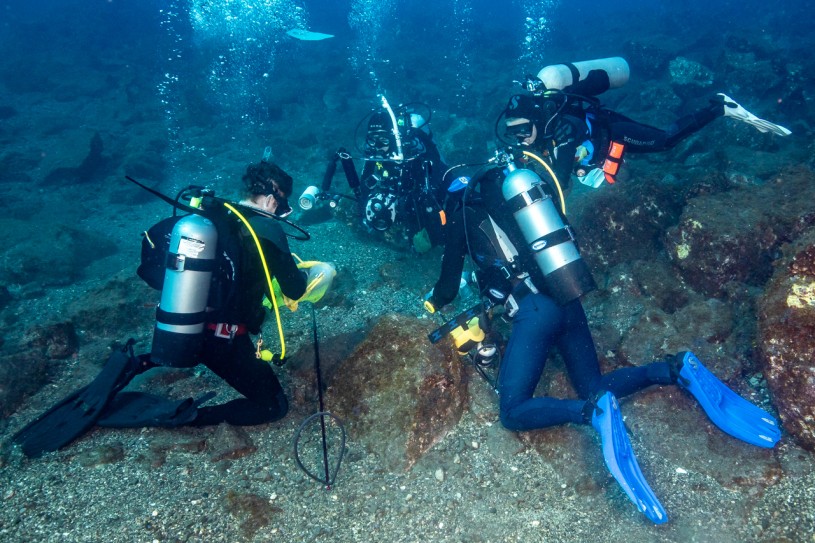
Left to right: Dr. William Ludt, Alasdair Dunlap-Smith (with camera), Ben Frable (with collection box), Keri Kenning
“One of the photographers, Ellie Place, spotted it immediately on our way down,” said Ludt. Her noisemaker alerted Ludt and Ben Frable, collections manager of the Scripps Institution of Oceanography fish collection, who followed the line of sight from her pointed finger.
“I was dreading the last dive. I thought there was a very low chance we were gonna get it based on how skittish it was,“ said Ludt. “We got very lucky, and within five minutes on our last dive, we had the fish we needed.” And despite spending the rest of the dive searching, that was the only male they saw—but Ludt and Frable managed to snag it. “We have juvenile, initial phase females and a terminal phase male. So we have representatives of the whole lifespan of the fish.”
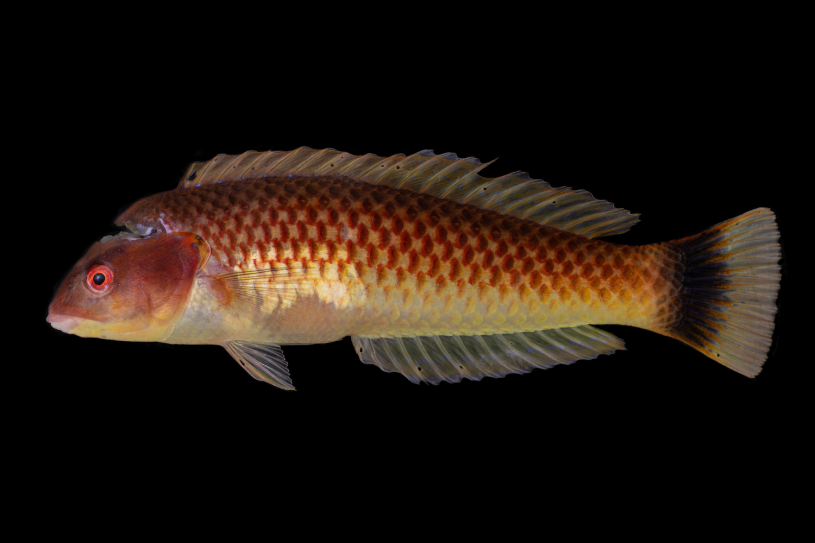
The holotype of this species is now housed in the Ichthyology collection at NHM for further study, accessible to researchers across the planet without having to make the arduous journey to Revillagigedos—and then get lucky enough to encounter the previously unknown fish.
Beyond the striking differences in appearance between the male and female individual’s physical appearance to the human eye, Ludt and his fellow researchers discovered large variation in patterning under fluorescent light: the female fish glowed bright red, while the male barely had any color.
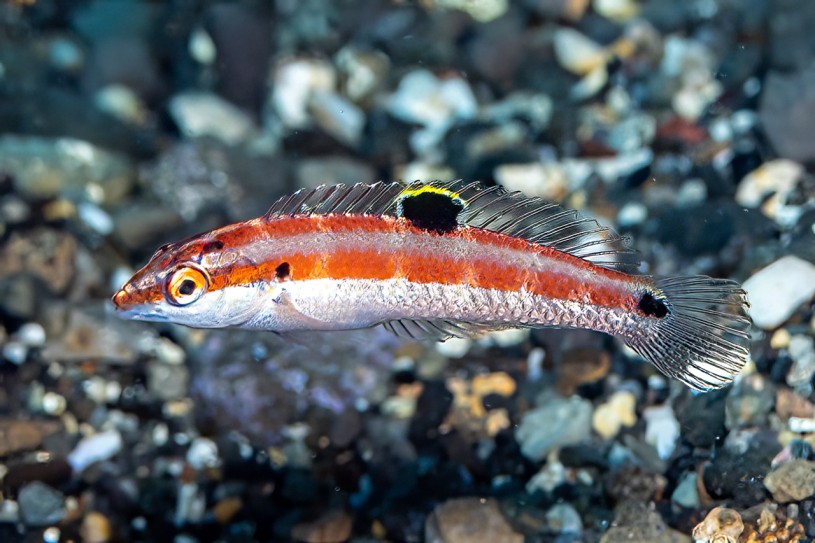
Photo by Allison & Carlos Estape
“The terminal phase male barely fluoresces at all,” said Ludt. “It's mostly just some of its fin rays that fluoresce a greenish-yellow color. With the initial phase female the entire body is bright red—totally different.”
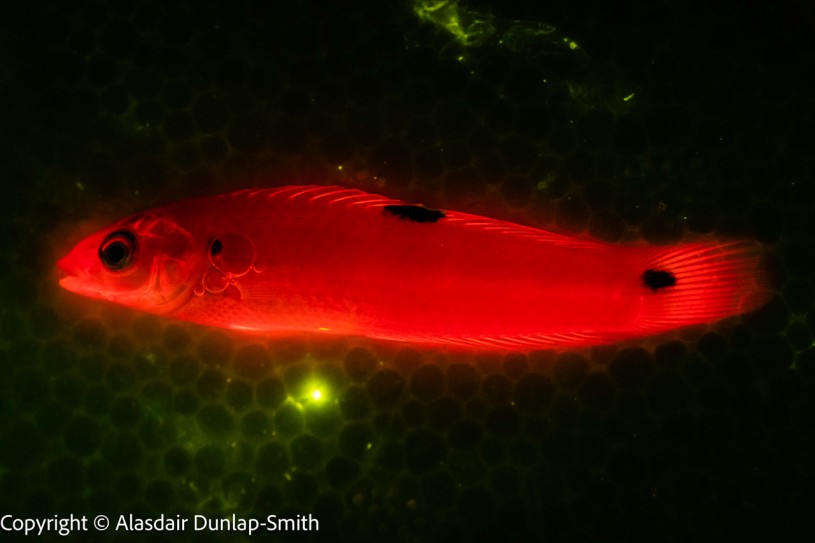
What—if anything—this hidden color change says about the fish is unclear, as is much of their natural history.
“It's hard to say what they would see,” Ludt points out. “These are fluorescent photos taken in a darkroom environment. When they're in their natural environment, it's not pitch black.” It’s difficult to see things through the eyes of a fish, especially one that’s new to science.
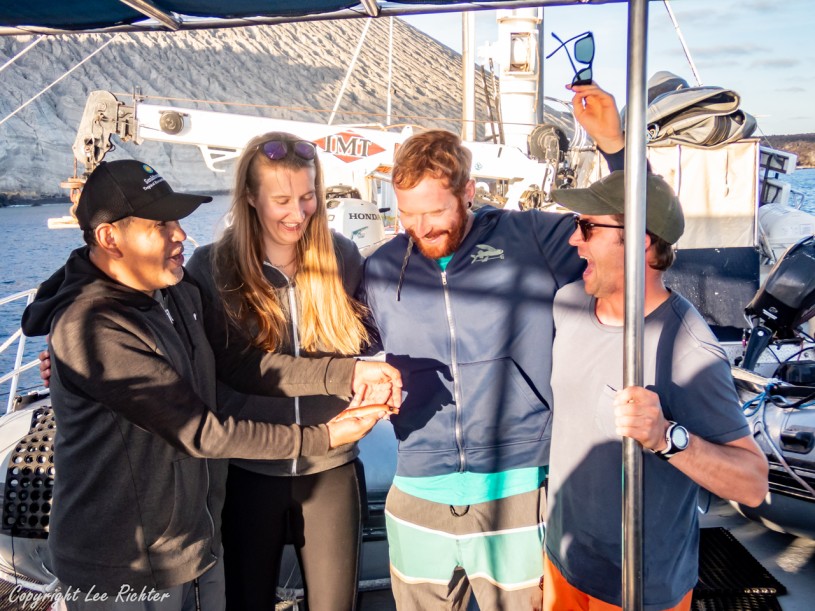
What does the underwater world look like to the tailspot wrasse? What about its potential mates? Questions like this can only be answered through fieldwork and museum specimens, which is one of the great things about science: there are always new mysteries to be solved and new discoveries to be made.
“Each new species from these extremely remote locations highlights how special these places are, and in this case with the Revillagigedos, luckily, they're already protected,” said Ludt. “This discovery speaks to why other remote areas need those same protections.”
